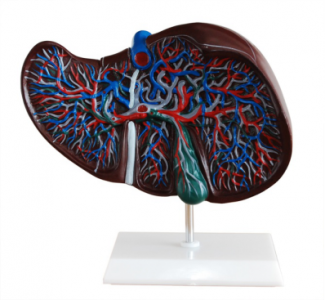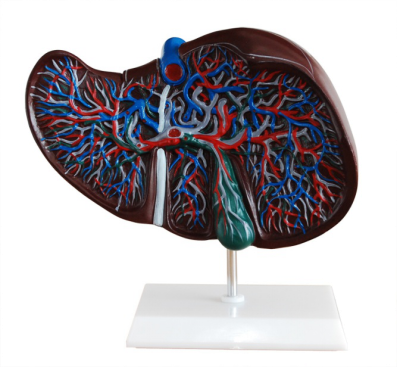ADA MED SUPPLY LIMITED
Phone:+86 19937901373
Tel:+86-0379-65160607
Email:adaanatomy@adaanatomy.com

Article tag: Liver anatomy model human organ anatomy

Whether the liver anatomical model takes into account the simulation of liver disease is a question of great concern. In modern medical education and clinical training, it is not only important to understand the normal anatomical structure, but also the pathological changes in the disease state. Here's an in-depth look at the issue:
First, the importance of liver disease simulation
Liver is one of the important organs of human body, and its functions are complex and diverse. When disease occurs in the liver, its structure, function and metabolism all undergo corresponding changes. Therefore, for medical students, physicians, and researchers, understanding these changes is critical for the diagnosis, treatment, and prevention of disease. If the liver anatomy model can simulate the state of liver disease, it will help them to understand the pathological characteristics of disease more intuitively, improve the teaching effect and the quality of clinical training.

Second, the way of liver anatomic model disease simulation
Liver anatomical models can be used in a variety of ways to simulate liver disease. First, the model can simulate different disease states by changing the appearance characteristics of the liver, such as shape, size, and color. For example, the liver cirrhosis model can be characterized by reduced liver size and nodular surface. The liver cancer model can be characterized by local swelling of the liver and hard texture. Secondly, the model can also simulate the pathological changes of the disease by adding specific pathological tissues or cells. For example, in the hepatitis model, pathological components such as inflammatory cells and fibrous tissue can be added to show the pathological characteristics of hepatitis.
Third, the application value of liver anatomic model disease simulation
Liver anatomical model has important application value in simulating liver diseases. First, it can help medical students better understand the pathological features of liver disease and improve their awareness and understanding of the disease. Second, for physicians, the liver anatomy model can be used as a clinical training aid to help them more intuitively understand the diagnosis and treatment options for diseases. In addition, the liver anatomical model can also be used in medical research and drug development and other fields to provide strong support for research in related fields.
Iv. Summary
In conclusion, liver anatomical model has important application value in simulating liver diseases. By simulating different disease states, the liver anatomy model can help medical students, doctors and researchers to more intuitively understand the pathological characteristics of liver diseases, improve the teaching effect and the quality of clinical training. Therefore, when selecting a liver anatomical model, we should pay attention to whether it takes into account the simulation function of liver disease.